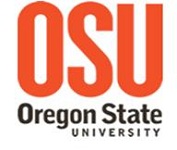- Dr. Stacey Harper received a five-year, $3.3 million award from the National Science Foundation to study the risks of micro- and nanoplastics to aquatic organisms in the pacific northwest.
- Dr. Stacey Harper received a five-year, $1.9 million award as an Outstanding New Environmental Scientist (ONES) from the National Institute of Environmental Health Sciences (NIEHS) and was selected as 2013 recipient of the L.L. Stewart Faculty Scholars Award which recognizes an outstanding faculty members at Oregon State University.
You are here
Nanoinformatics workshop report: Current resources, community needs, and the proposal of a collaborative framework for data sharing and information integration
| Title | Nanoinformatics workshop report: Current resources, community needs, and the proposal of a collaborative framework for data sharing and information integration |
| Publication Type | Journal Article |
| Year of Publication | 2013 |
| Authors | Harper S, Hutchison JE, Baker N, Ostraat M, Tinkle S, Steevens J, Hoover MD, Adamick J, Rajan K, Gaheen S, Cohen Y, Nel A, Cachau RE, Tuominen M |
| Journal | Comput Sci Discov |
| Volume | 6 |
| Issue | 1 |
| Pagination | 14008 |
| Date Published | 2013 |
| ISSN | 1749-4699 |
| Abstract | The quantity of information on nanomaterial properties and behavior continues to grow rapidly. Without a concerted effort to collect, organize and mine disparate information coming out of current research efforts, the value and effective use of this information will be limited at best. Data will not be translated to knowledge. At worst, erroneous conclusions will be drawn and future research may be misdirected. Nanoinformatics can be a powerful approach to enhance the value of global information in nanoscience and nanotechnology. Much progress has been made through grassroots efforts in nanoinformatics resulting in a multitude of resources and tools for nanoscience researchers. In 2012, the nanoinformatics community believed it was important to critically evaluate and refine currently available nanoinformatics approaches in order to best inform the science and support the future of predictive nanotechnology. The Greener Nano 2012: Nanoinformatics Tools and Resources Workshop brought together informatics groups with materials scientists active in nanoscience research to evaluate and reflect on the tools and resources that have recently emerged in support of predictive nanotechnology. The workshop goals were to establish a better understanding of current nanoinformatics approaches and to clearly define immediate and projected informatics infrastructure needs of the nanotechnology community. The theme of nanotechnology environmental health and safety (nanoEHS) was used to provide real-world, concrete examples on how informatics can be utilized to advance our knowledge and guide nanoscience. The benefit here is that the same properties that impact the performance of products could also be the properties that inform EHS. From a decision management standpoint, the dual use of such data should be considered a priority. Key outcomes include a proposed collaborative framework for data collection, data sharing and information integration. |
| DOI | 10.1088/1749-4699/6/1/014008 |
| Alternate Journal | Comput Sci Discov |
| PubMed ID | 24454543 |
| PubMed Central ID | PMC3895330 |
| Grant List | U01 NS073457 / NS / NINDS NIH HHS / United States |
Theme by Danetsoft and Danang Probo Sayekti inspired by Maksimer
